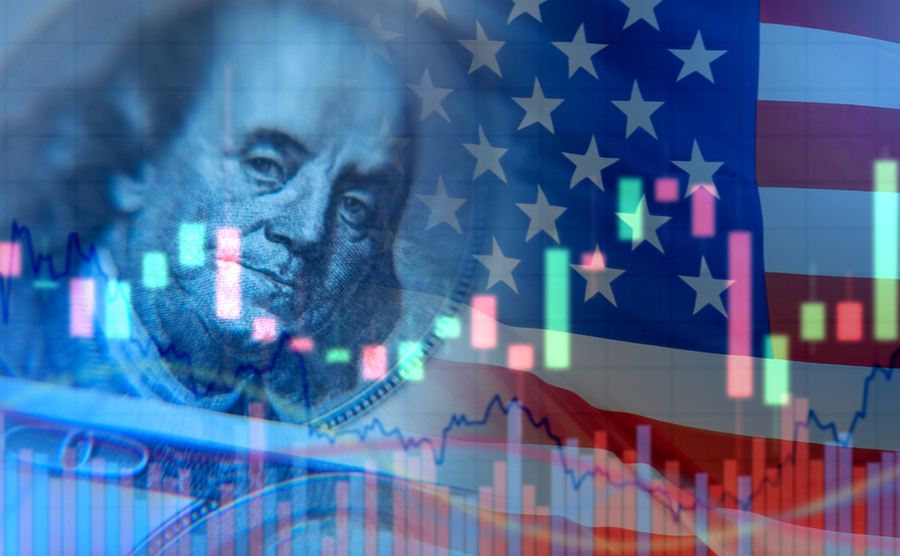
This week markets have seen the US dollar shoot up against several of its rival currencies. Many watch closely to see if those gains will be short-lived. Here’s what’s happened with GBP, EUR, USD and AUD.
GBP
Sterling’s performance at the start of the week was reflected in the UK’s gloomy weather and matching economic outlook. Between hawkish comments from the Fed’s Chair, followed by warnings of further sterling weakness from MPC member, Catherine Mann, and a flurry of economic data across the board, pound-watchers had plenty to digest.
The remarks from central bank officials contributed largely to sterling’s poor performance against the euro and US dollar on Tuesday, where it lost around 0.5% and 1.5% respectively.
On the data front, outcomes were more upbeat with new car sales and construction PMI both climbing. The UK’s year-on-year retail sales rose to 4.9% (after a 3.9% rise in January) and was well above market expectations of 2.1% increase.
Small rays of optimism continued to cut through this week’s pessimistic outlook helping to cushion sterling against further losses on Thursday.
It was confirmed on Wednesday that RMT strikes scheduled for 16th and 18th March will no longer be going ahead, as referendums on new pay are set to take place. Many will be watching to see how the referendums will impact the UK’s economy in the weeks to come.
A little after lunchtime on Thursday, sterling made monthly gains of around 0.27% against the euro. GBP/USD also started to pick back up but not enough to climb out of its weekly and monthly lows (read more in Thursday’s currency note).
On Friday, the latest GDP figures for the UK will be released and traders will be keeping an eye on the results. If they indicate no change (0.0%) as expected, this might be enough to nudge the pound a little higher, as spot on results tend to please markets.
EUR
Like most currencies this week, the euro was down against the dollar as investors rushed to the greenback following Powell’s remarks. The single currency edged towards a new low against the greenback on Wednesday (the lowest since early January) but managed to resist additional losses by the end of the day.
Data has been mixed across the eurozone since Monday. German data on Wednesday revealed that industrial output rose by 3.5% in January which was more than double what markets had priced in. On the other hand, retail sales weren’t particularly pleasing – many expected them to rise, however they fell by 0.3% instead.
The latter half of the week suggested there is still a fighting chance for the euro, as expectations of a tough ECB stance provided the single currency with a softer landing against USD losses.
By Thursday afternoon, the euro made daily gains against the US dollar but nothing monumental enough to bring it above its weekly or monthly low.
USD
Market watchers saw the US dollar become the top performer after hawkish comments from Powell lifted the currency against its rivals. The Fed’s chair warned that the US central bank is prepared to increase the pace of rate hikes should incoming data exceed expectations.
Powell’s statements in turn triggered the US dollar to rally against sterling. USD also hit fresh highs against the euro, japanese yen and swiss franc on Wednesday, as investors anticipated higher rate hikes to come from the Fed.
On the data front, dollar-watchers have had lots of dollar-boosting data to chow down on over the course of the week. Tomorrow, non-farm payrolls will take the spotlight as investors will be keen to see if the data will add to or reverse the dollar’s new-found strength.
AUD
The australian dollar has had a tumultuous week thus far. On Wednesday, the aussie dollar fell sharply against the greenback following what many are calling the “perfect storm” of a more dovish-than-expected RBA and hawkish remarks from Powell. This triggered AUD/USD to fall below its December low.
The governor of the Reserve Bank of Australia, Philip Lowe, suggested that while a pause in the tightening cycle is imminent, it may not be quite here yet. Lowe added that he has an “open mind” toward next month’s RBA meeting and that the upcoming inflation, jobs and consumption data is key.
Following the central bank’s tenth-consecutive rate hike, Lowe noted that further tightening will be needed to combat inflation.
Next week, many will be looking to the Australian Bureau of Statistics for the country’s February jobs data. If the results are in line with expectations, or even better than what markets have priced in, then this could give the aussie dollar a boost.
We believe it is imperative for businesses exposed to market volatility to have effective risk management strategies in place. Call our team today on 020 7898 0500. We will be delighted to help you mitigate your currency risk.

 020 7898 0500
020 7898 0500